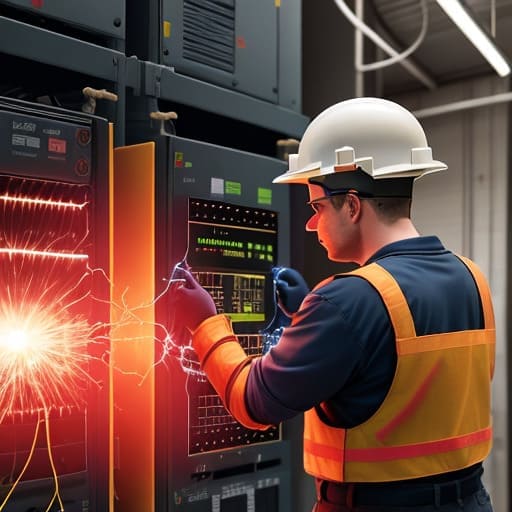When a gas is exposed to a voltage larger than its insulating capacity, electrical discharges might happen. When the voltage is high enough to ionize the space between the conductors, an arc will develop. Ionized air transforms into a superb conductor, enabling the movement of electricity. Air ionization results in a current that emits heat and dazzling light. This heat leads the ionized air to rise and produce an arch-shaped current, which results in the phenomena. An arc discharge may reach 20,000 degrees Celsius in temperature.
Arc discharges are dangerous for people and things. Arc in flash has a variety of consequences on industry, including:
- Worker compensation, medical expenditures, rehabilitation costs, accident investigation costs, and lost productivity are examples of direct costs.
- Indirect costs include things like court charges, penalties, litigation costs, insurance premiums, repair costs, and labor costs for replacement.
- The potential for criminal charges, your reputation, and your employability are all consequences.
- High incident rates usually result in customer rejection, missed business prospects, and license revocation for electrical contractors.
- Flash electrical circuit failures regularly lead to missed chances and wasted money.

Causes of Arc Flash Hazard:
- Utilizing a subpar probe surface
- Inappropriate tools, setups, and practices
- Using inferior electrical components
- Gaps in the machinery or faulty insulation
- Unplug any panels that aren’t working.
- Electrical equipment contamination and corrosion
- Inadequate switch and circuit breaker maintenance
- Deteriorating connections or defective components
- Conductors that supply power constantly or at a high voltage
- Water in electrical devices
Techniques for Reducing Arc Flash Risk:
Electrical Equipment Disabling:
To the greatest extent feasible, it reduces potential dangers. Use extra caution when checking or re-energizing de-energized equipment. Circuit breakers are kept away from arc discharge limits using remote tracking technology to protect their users.
Utilize Low-Risk Technology:
To ascertain the risks connected with short circuits and the coordination of protective devices, an arc discharge analysis and power system research are performed. Low-threat measures, including remote rack equipment, can protect people and property.
Electrical and Control System Redesign:
Make sure you have access to the PPE level that the arc discharge hazard category specifies. Engineers are adjusting engineering tools and practices to lower hazards. In order to limit incident energy, circuit breakers and energy distribution systems are built.
Lessen the Potential Fault Current Level:
The industry will benefit from circuit breakers without current limitations by lowering fault current availability. These tools may be maintained since they have a visible tie. Disconnecting dual power sources while doing maintenance lowers the likelihood of an arc discharge by reducing the available fault current. By restricting the flow of electrical current during arc faults, current-limiting reactors can successfully stop current flow.
Adjust the Blaster's Strength:
Encourage the usage of arc-resistant materials. Arc-resistant switchgear is used to transmit heat and energy from arc discharges to unoccupied areas via ducts. Arc-resistant switchgear has sealed joints, pressure relief ventilation on top, and stronger hinges. CareLabs analyzes arc discharges in-depth. Arc discharge dangers are assessed by professionals to update your safety program. CareLabs can locate and apply cutting-edge arc flash risk reduction strategies. CareLabs may carry out research and put cutting-edge technology into practice for arc flash risk reduction.
Software called ETAP (Electrical Transient Analysis Program) is used by CareLabs to perform research and analysis. In order to make sure that our knowledge is available in both normal and emergency situations, crew members are stationed at various places. gaining ISO 9001:2008 certification and client loyalty quickly. In Saudi Arabia, we provide our services in Riyadh, Jeddah, Mecca, and Medina.
OUR
Blogs
Privacy Overview
This website uses cookies so that we can provide you with the best user experience possible. Cookie information is stored in your browser and performs functions such as recognising you when you return to our website and helping our team to understand which sections of the website you find most interesting and useful.
Strictly Necessary Cookies
Strictly Necessary Cookie should be enabled at all times so that we can save your preferences for cookie settings.
If you disable this cookie, we will not be able to save your preferences. This means that every time you visit this website you will need to enable or disable cookies again.
Cookie Policy
More information about our Cookie Policy
